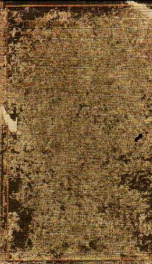christ and the eastern soul the witness of the oriental consciousness to jesus

DUE to the present popularity of period furniture designs, the demand for gate-leg tables has almost become a fad. Thousands of reproductions have been made and the style has been highly featured in magazines and books of recent publication. During the Colonial days the tables were often made of oak. William Pcnn owned one of this kind. Later models were made of walnut and maple. Most of them are now made of mahogany, walnut, gum and birch. Those made of other woods like poplar or whitewood and pine are often finished in tones of ivory, cream or gray, with decorative patterns stenciled on the top surface.To reproduce the table shown on these drawings, turn the legs and stretchers on the lathe. Cut out the stock to dimensions for other parts of the table and then proceed with the assembly of the end frames. Cut the notches and glue up the two gates. Locate and bore the pivot centers and cut the notches on the cross-rails and long stretchers. It is advisable to put the rest of the tablTable of Contents Gate-Leg Table 7; Sheraton Card Table io; Sheratox Work Table 12; Sheraton Breakfast Table 14; Tavern Table 16; Mahogany Tea Table iS; Hepplewhite Work Table 20; Hepplewhite Card Table 22; Empire Card Table 24; Mahogany Tip-Top Table 26; Grandfather Clock 51; Banjo Clock 36; Windsor Chairs 58; Hepplewhite Chair 44; Empire Chair 46; Colonial Looking Glass 48; Old Fashioned Mirror >o; Wood Finishing 52About the Publisher Forgotten Books is a publisher of historical writings, such as: Philosophy, Classics, Science, Religion, History, Folklore and Mythology.Forgotten Books' Classic Reprint Series utilizes the latest technology to regenerate facsimiles of historically important writings. Careful attention has been made to accurately preserve the original format of each page whilst digitally enhancing the difficult to read text
Info about the book
Author:
Series:
Unknown
ISBN:
5876192708
Rating:
4.5/5 (1)Your rating:
0/5
Languge:
English
Users who have this book
Users who want this book
What readers are saying
What do you think? Write your own comment on this book!
write a commentif you like christ and the eastern soul the witness of the oriental consciousness to jesus try:
Do you want to exchange books? It’s EASY!
Get registered and find other users who want to give their favourite books to good hands!






